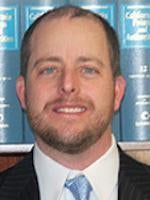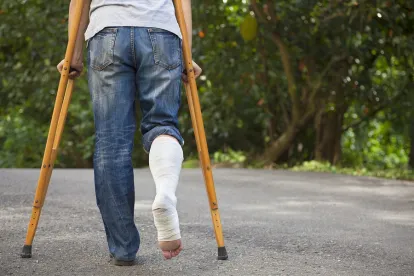People who are injured while they are working are allowed to file claims for workers’ compensation benefits through their employers. When a worker is injured while working at a site that his or her employer does not own or control, the worker may also have a claim that he or she may file against the property owner in certain cases. A recent California case in San Luis Obispo County demonstrates how property owners may be liable when a worker is injured while working on their properties.
Factual background of the case
A 54-year-old fire alarm technician was working as a part of a two-man crew to inspect the fire alarms at the Bella Vista Transitional Care Center. While he was conducting the inspection, the care center provided him with an extension ladder to use. He fell off of the ladder 12 feet to the ground, breaking both of his feet and suffering orthopedic injuries. He also suffered a compression fracture in the lumbar area of his spine that could not be corrected with surgery. He filed a premises liability lawsuit against the care center in June 2014, and the case reached a verdict following a trial in May 2016.
Plaintiff’s arguments
The plaintiff argued that the maintenance supervisor who supplied him with the ladder had set it up incorrectly. He also argued that the maintenance supervisor had failed to inspect and maintain the ladder, which violated the safety regulations put in place by the Occupational Safety and Health Administration. Finally, the plaintiff contended that all of his injuries were caused by the accident that happened.
Defendant’s arguments
The defendant argued that the accident was the fault of the plaintiff’s employer and the plaintiff. The defendant contended that the employer did not properly train its staff about properly inspecting and using ladders. The defendant also argued that the condition of the ladder and the manner in which it was set up were safe and that the fire alarm technician had a ladder on his work truck that he could have used. Finally, the defendant argued that the plaintiff was not left totally disabled and should have gone back to work before the trial.
Demands and offers
Before trial, the plaintiff made a demand of $1 million to settle the case, which was the policy limit for the care center’s premises liability insurance policy. The defendant’s final offer before trial to settle the case was $200,000.
Trial and verdict
The trial lasted for 10 days. After both sides rested, the jury deliberated for two days before returning a verdict in favor of the plaintiff. The jury found that the Bella Vista Transitional Care Center was 70 percent at fault in causing the accident, the technician’s employer was 28 percent at fault and the technician was 2 percent at fault. The gross verdict awarded in the case was $2,220,395. Since the employer and the plaintiff both shared portions of the fault, the verdict amount was reduced by 30 percent for a net verdict amount of $1,703,348.
The plaintiff was also awarded pre-judgment interest, expert witness costs and ordinary litigation costs because the amount of the verdict was more than the California Code of Civil Procedure §998 demand. This meant that the total the plaintiff would receive would be $2 million. Of the total verdict, $450,000 was for past non-economic losses and $1 million was for future non-economic losses. He was also awarded economic damages for past lost wages in the amount of $108,686, future lost wages in the amount of $250,000, past medical expenses in the amount of $141,473 and future medical expenses in the amount of $270,272.
When workers are injured at sites that are not owned or controlled by their employers
This case illustrates the fact that when a worker is injured at the premises of another person other than his or her employer’s, and the employer was not in control of the property at the time of an accident, the worker may file a premises liability lawsuit against the property owner and a workers’ compensation claim simultaneously. Workers’ compensation benefits may cover all of the worker’s past medical expenses and future medical expenses that are related to the injury that he or she suffered. In addition, if the worker was left either partially or totally disabled and unable to return to his or her job, workers’ compensation benefits may be available to pay the worker monthly payments to replace a portion of his or her former income.
In addition, the worker may seek damages from the property’s owner in the case that the owner was negligent and breached the duty of care the property owner owed to people who are lawfully on the premises. In a premises liability action, an injured victim must show that the property owner knew or should have known about the presence of a hazard and failed to correct it. The plaintiff must also show that the breach of the duty of care caused the accident and that the plaintiff suffered harm and injury as a result of it. In this case, the care center was found to be liable under a theory of premises liability because the maintenance supervisor should have inspected the ladder, maintained it and set it up properly. It is also possible that the maintenance supervisor set the ladder up incorrectly, causing it to slip and the man to fall. In this case, the maintenance supervisor would have created the hazard that caused the fire alarm technician’s injury.



 />i
/>i

